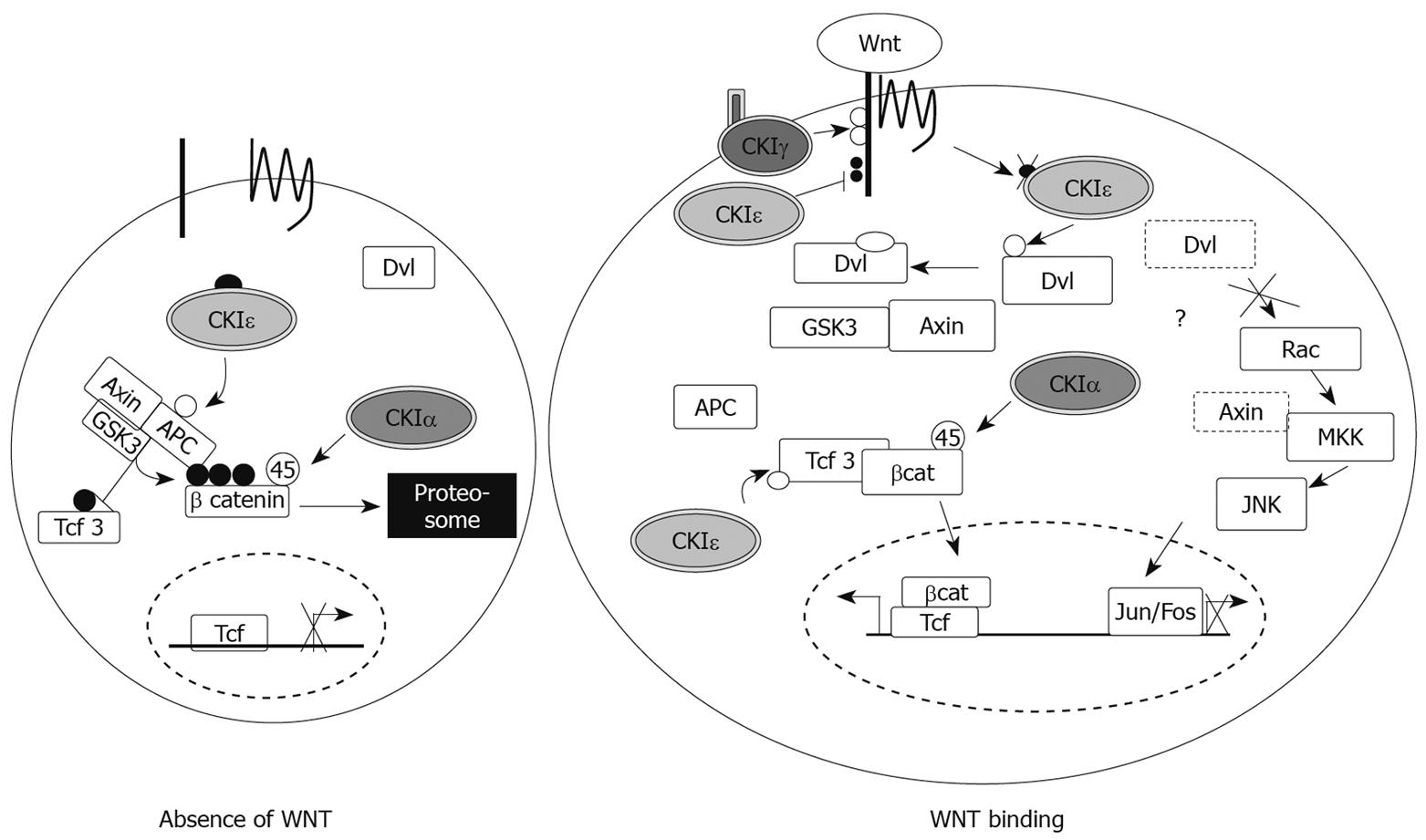Copyright
©2009 Baishideng.
World J Gastrointest Oncol. Oct 15, 2009; 1(1): 26-33
Published online Oct 15, 2009. doi: 10.4251/wjgo.v1.i1.26
Published online Oct 15, 2009. doi: 10.4251/wjgo.v1.i1.26
Figure 3 CKI members in canonical Wnt signaling.
In the absence of Wnt ligand, β-catenin is phosphorylated by GSK3β after priming at S45 by CKIα and becomes degraded. In this state, CKIepsilon phosphorylates APC and stabilizes the β-catenin degradation complex. Upon Wnt ligand binding to its receptor, CKIepsilon is fully activated through dephosphorylation and contributes to the disassembly of the β-catenin degradation complex by phosphorylating Dishevelled (Dvl) and facilitating its interaction with Axin and GSK3β. Therefore, even though CKIα still primes β-catenin at S45, without additional phosphorylation by GSK3β, β-catenin becomes stabilized and accumulates in the cytoplasm. CKIepsilon also promotes β-catenin stability by phosphorylating Tcf3 which competes against GSK3β for β-catenin. Stabilized β-catenin then translocates into the nucleus, where it contributes to activation of Wnt target genes. CKIepsilon also negatively regulates the Wnt pathway by phosphorylating the LRP-co-receptor, which is positively phosphorylated by CKIγ. Since epistasis analysis showed that CKIepsilon-mediated phosphorylation of LRP was downstream of its phosphorylation of Dvl, this is most likely a negative feedback loop to quickly deactivate the pathway after propagation of the signal.
- Citation: Modak C, Chai J. Potential of casein kinase I in digestive cancer screening. World J Gastrointest Oncol 2009; 1(1): 26-33
- URL: https://www.wjgnet.com/1948-5204/full/v1/i1/26.htm
- DOI: https://dx.doi.org/10.4251/wjgo.v1.i1.26









